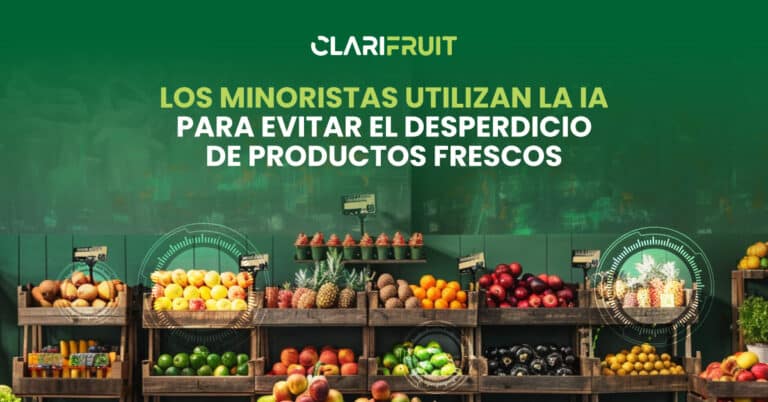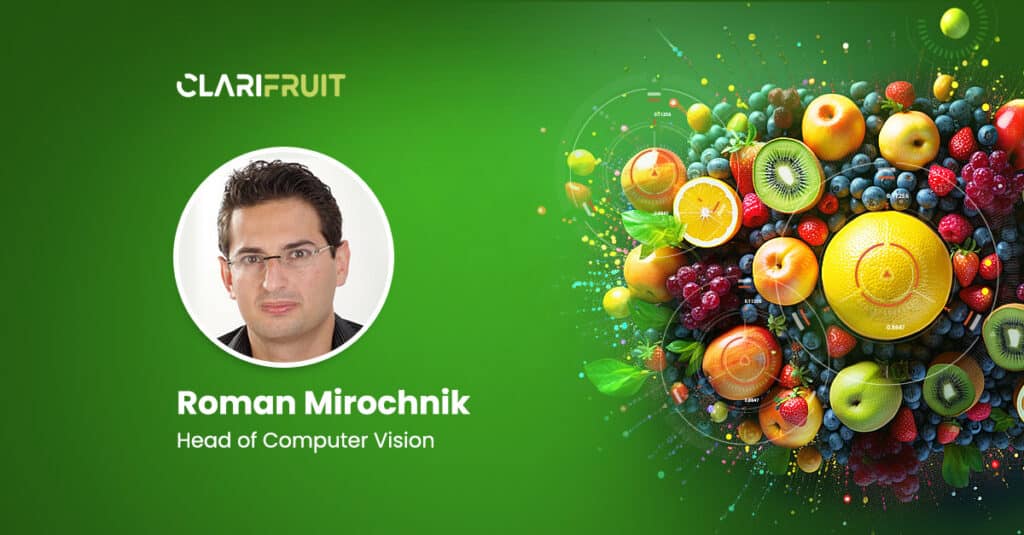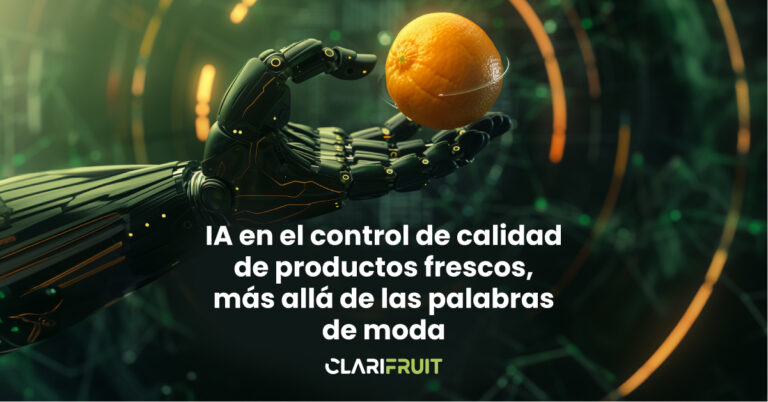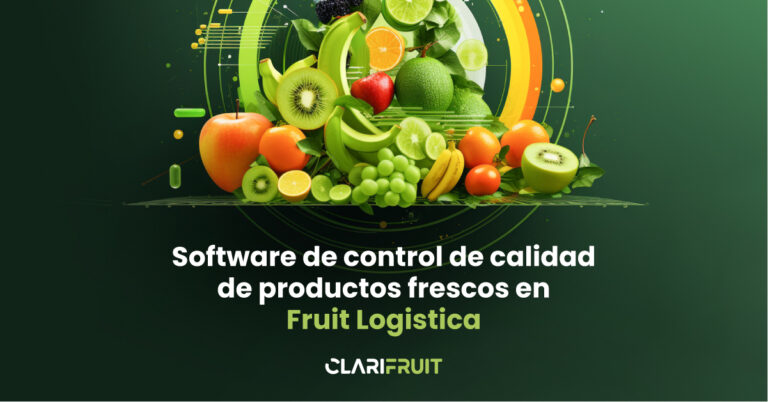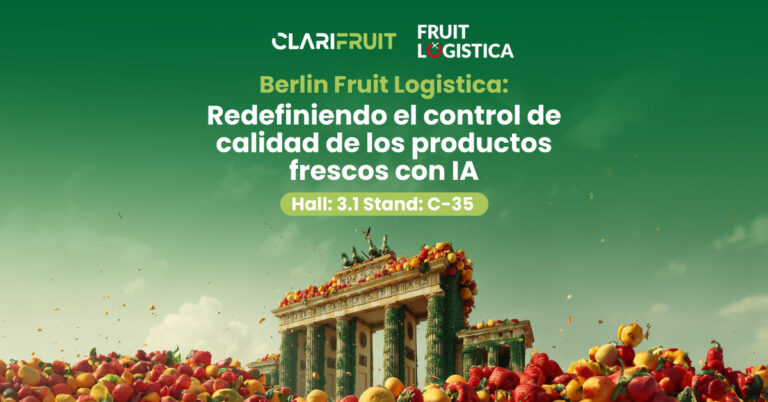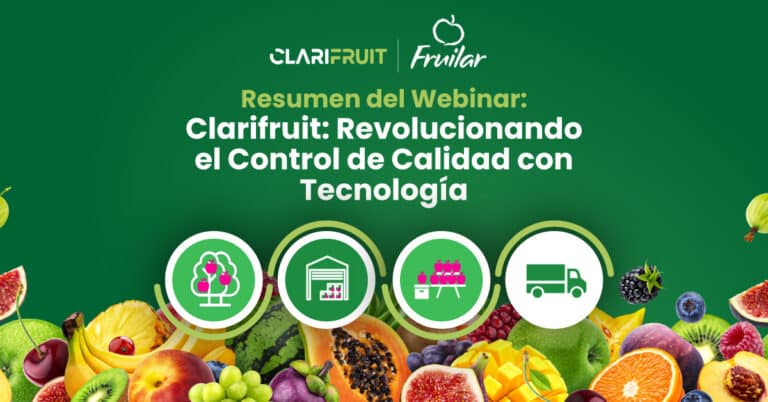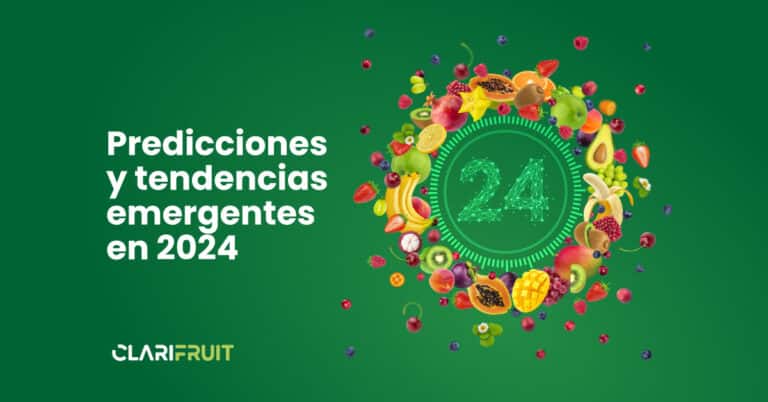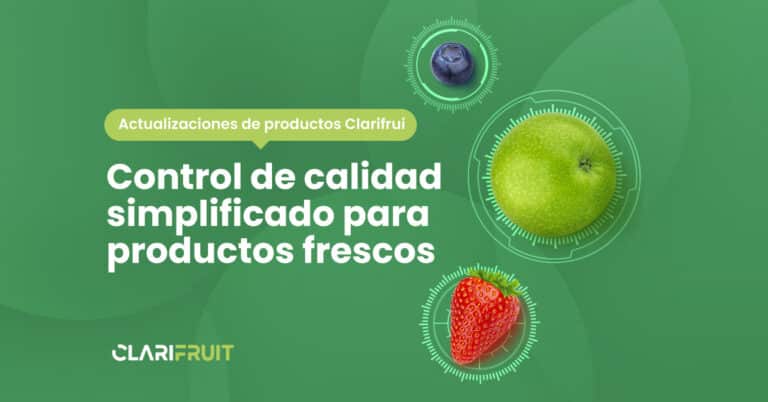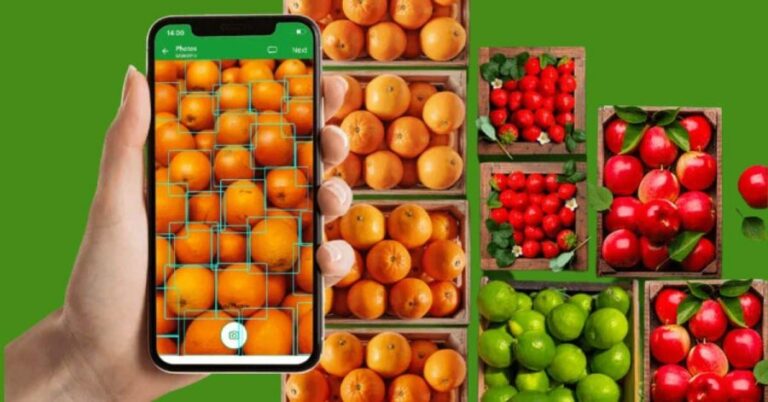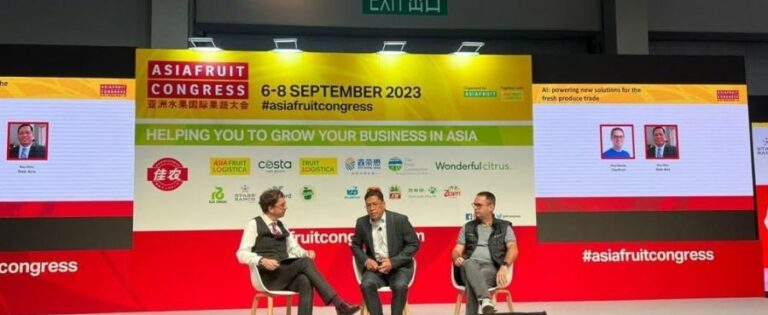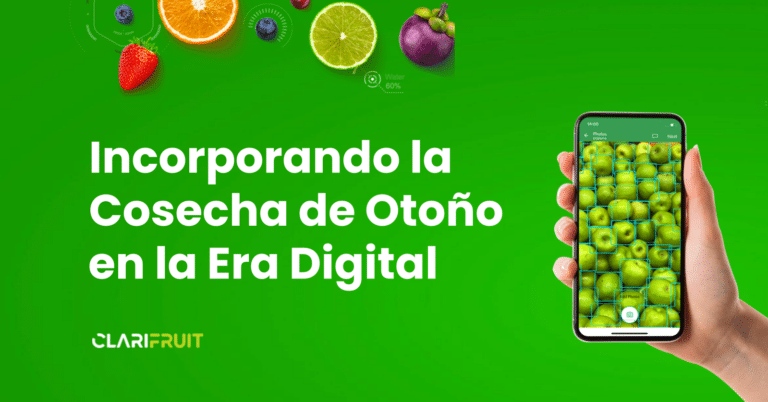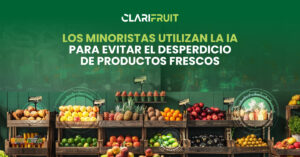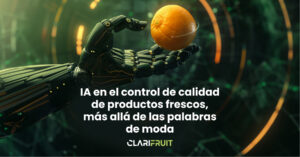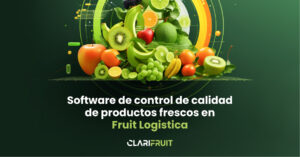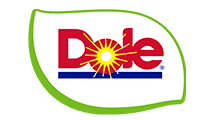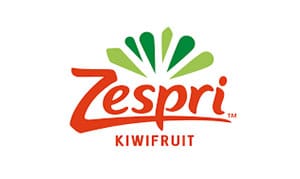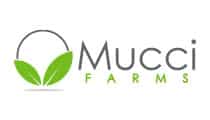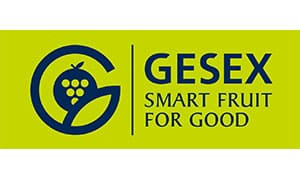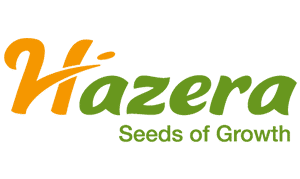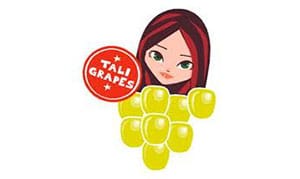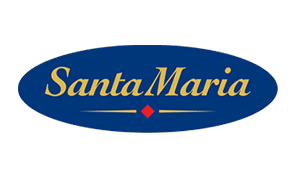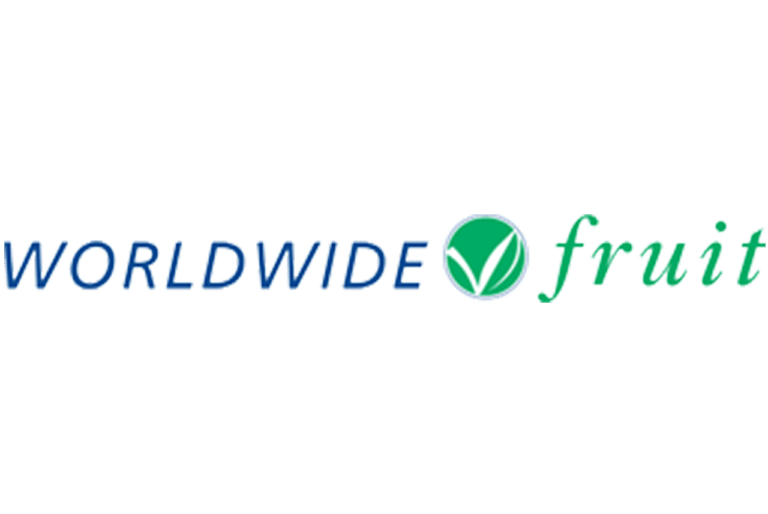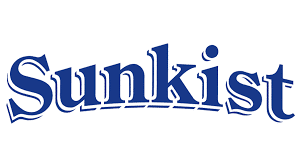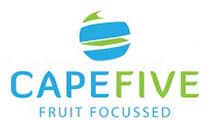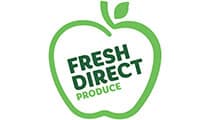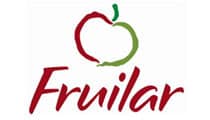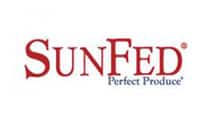Once the stuff of science fiction, computer vision is now one of the most important tools for ensuring the quality of fresh produce arriving at your local supermarket. We can’t think of anyone better to talk about this topic than our own Roman Mirochnik, Head of Machine Vision at Clarifruit.
We decided to ask you a few questions about how machine vision works in the fresh produce quality control process, why it is so important, and how Clarifruit is being at the forefront of this ever-evolving field.
This was our conversation.
First things first: Can you help us understand what Computer Vision does?
In the context of fruit and vegetable quality control, machine vision systems use cameras or sensors to capture images of products. Algorithms then extract relevant features such as color, texture and shape to identify any deviations from desired quality standards.
This is really important for customers, as automating these processes speeds up inspections and eliminates human error. I’m sure we’ll talk about that soon.
What exactly is your role as Head of Machine Vision at Clarifruit?
Basically, our responsibility is to integrate the power of AI into the world of AgriTech. To achieve that, we have a dedicated team responsible for making the entire Clarifruit system run smoothly for our customers. Our goal is to ensure our clients always get the precise results they need, quickly and easily.
We develop all the algorithms that perform these calculations, along with all the servers and systems that run in the background. Essentially, we help our clients transition their quality control processes into the digital era and automate the way they evaluate the essential attributes of their products.
What attributes does Clarifruit support at this time?
First, let me explain our thinking about attributes. We classify them into a series of levels, increasing in complexity as you go up.
Level 1 includes all attributes that you can manually evaluate and enter the values into our application.
At level 2, we use computer vision to measure simple attributes such as stem size, color, and condition.
Level 3 is where defect analysis occurs, and this is when things get more complex, because each product category has its own specific set of defects. And within each category, a distinction must be made between progressive and quality defects.
Por ejemplo, imagina que tienes un cargamento de naranjas. Y encuentras una unidad con un defecto cosmético que le da una apariencia poco atractiva, pero sin afectar su calidad general ni la calidad de otras naranjas. Pero si contiene moho, este se extenderá y destruirá a las otras naranjas. Por lo tanto, nuestros clientes necesitan poder diferenciar entre estos tipos de defectos; y eso es una parte de por qué utilizamos la visión artificial para automatizar este proceso.
¿Cuáles son sus desafíos más grandes y cómo los ha superado?
Uno de los problemas más difíciles que hemos tenido que resolver es que no tenemos control sobre cómo nuestros clientes toman las fotos de sus productos frescos. Un inspector puede tomar una foto de una fruta o vegetal dentro del almacén, mientras que otro inspector puede tomar fotos al aire libre, a la luz del sol. El contexto, la iluminación y la calidad de estas imágenes varían en gran medida, por lo que hemos tenido que asegurarnos de que nuestro algoritmo de visión artificial pueda funcionar con todos estos factores y ofrecer resultados precisos.
El algoritmo debe ser capaz de identificar con éxito la categoría de productos adecuada y ejecutar los cálculos apropiados, por lo que debemos realizar pruebas y refinarlo para asegurarnos de que estamos abarcando una gran cantidad de escenarios potenciales. Es un gran desafío, pero me enorgullece decir que nuestro equipo lo ha logrado.
¿Qué valor aporta la visión artificial a los clientes de Clarifruit?
Esa es una gran pregunta, porque todo lo que hacemos aquí tiene como objetivo generar valor para nuestros clientes. Desde mi punto de vista, existen algunas ventajas importantes que un sistema de visión artificial como el nuestro les ofrece a nuestros clientes:
Primero, hablaré sobre la objetividad. Pensemos en un atributo como el color. Un inspector observa una fruta y decide que pertenece al grupo de color A. Otro inspector evalúa exactamente el mismo artículo como perteneciente al grupo de color B. Esta subjetividad es bastante problemática, pero también es inevitable cuando se depende de inspecciones manuales. La visión artificial soluciona este problema por completo, porque siempre es objetiva.
Las empresas también pueden ahorrar bastante tiempo en capacitaciones. En el pasado, la capacitación a los inspectores tardaba mucho tiempo y era altamente especializada. Con un sistema de visión artificial, esto ya no es necesario. Cualquiera puede realizar estas inspecciones simplemente tomando una fotografía.
Otro beneficio es, por supuesto, la velocidad. En vez de medir cada artículo individual en un envío, el inspector puede simplemente tomar algunas fotos y Clarifruit genera instantáneamente los resultados. También se obtendrán resultados para todos los atributos al mismo tiempo: condición del tallo, tamaño, color, etc. Para poder medir más frutas y vegetales, en menos tiempo, y de manera más precisa.
Podrás ver por qué esto hace que el control de calidad sea mucho más fácil que antes.
Entonces, ¿qué viene ahora?
Anteriormente comenté sobre los niveles 1 a 3, es decir, todo desde los atributos externos básicos hasta los defectos más importantes para cada categoría de producto. De cara al futuro, queremos eventualmente integrar los niveles 4 y 5. En estos niveles, estamos observando atributos internos, cosas como el nivel de azúcar, acidez, peso en seco, etc. Sin embargo, esto requiere diferentes tipos de sensores como los sensores infrarrojos. Esa tecnología aún no está madura, pero nuestro plan a largo plazo es ser vanguardia en esto también.
Eventually, Clarifruit will support all fruit categories and measure all attributes and defects at these levels. So it will be an even more powerful platform than it is now. To be honest, we are very excited about the future. I see Clarifruit dominating this field in the coming years and delivering the solid and accurate results that AgriTech companies will need in the future.
Do you want to learn more? There is much more we could say about computer vision. Contact our team to schedule a free demo and continue chatting.
